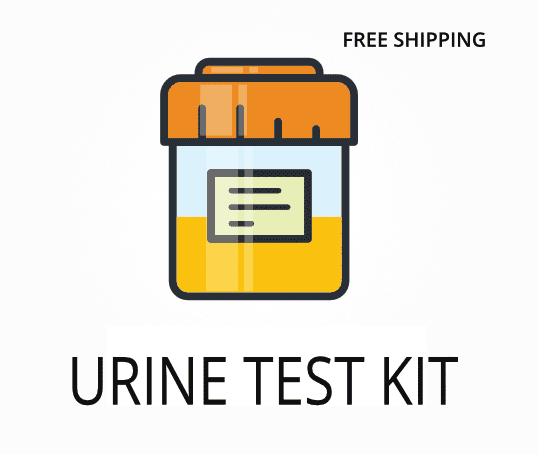Ordering the Urine Toxic Metals | Doctor’s Data
Urine Toxic Metals testing helps detect and measure levels of heavy metals like lead, mercury, and arsenic in the body. This test is often used when there are unexplained symptoms such as fatigue, memory problems, or skin rashes that may be linked to toxic metal exposure. Interestingly, some metals like beryllium and thallium can be present in the environment or certain jobs, and their buildup may go unnoticed for years.
Ordering this test can help you:
- Identify hidden sources of heavy metal exposure from water, food, or work environments
- Track the effectiveness of detoxification or chelation therapy
- Monitor ongoing exposure in people with known risk factors
- Detect early signs of kidney or nerve damage related to metal toxicity
- Support your healthcare provider in making targeted treatment decisions
Who Should Consider Heavy Metal Urine Screening
People who have ongoing tiredness, headaches, or unexplained mood changes may benefit from this test, especially if they live in older homes or work in industries with metal exposure. For example, someone who recently started a job in battery manufacturing and notices new symptoms like skin rashes or trouble concentrating may want to check for heavy metal buildup.
Ordering this test may also be helpful in these situations:
- Living near industrial sites or areas with known water contamination
- Having dental work with metal fillings or implants
- Eating large amounts of fish or seafood regularly
- Experiencing hair loss or changes in nail color without a clear cause
- Using imported herbal remedies or supplements that may contain hidden metals
Testing for heavy metals can reveal if your body is holding onto toxic substances that may be causing symptoms like nerve pain or kidney problems. Delaying this test could mean missing the chance to address exposure before it leads to more serious or lasting effects.
Preparing for Toxic Metal Urine Analysis
Fasting is not required for this test, but it is best to avoid seafood for at least 72 hours before collecting your sample. Always follow any specific instructions your healthcare provider gives you to make sure your sample is collected and handled correctly for the most useful results.
Labs Included When Ordering Your Urine Toxic Metals | Doctor’s Data
| Test Name | Reference Range | Significance | Low and High Levels of Urine Toxic Metals | Doctor’s Data |
|---|---|---|---|
| Aluminum | <7 | Aluminum is a metal found in water, food, and some medicines. High levels can affect the brain and bones. | High levels mean possible exposure from cookware, antacids, or contaminated water.
Low levels mean minimal or no recent exposure. |
| Antimony | <1 | Antimony is used in batteries and flame retardants. It can cause stomach pain and breathing problems if levels are high. | High levels mean recent contact with industrial materials or contaminated products.
Low levels mean little or no exposure. |
| Arsenic | <35 | Arsenic is found in some foods, water, and pesticides. High levels can cause skin changes, stomach upset, and nerve issues. | High levels mean possible exposure from seafood, rice, or contaminated water.
Low levels mean no significant recent exposure. |
| Barium | <7 | Barium is used in some medical tests and industries. High levels can affect the heart and muscles. | High levels mean exposure from industrial sources or contaminated water.
Low levels mean no recent exposure. |
| Beryllium | <1 | Beryllium is used in electronics and aerospace. High levels can cause lung and skin problems. | High levels mean possible workplace exposure.
Low levels mean no significant exposure. |
| Bismuth | <2 | Bismuth is found in some stomach medicines. High levels can cause kidney and nerve problems. | High levels mean overuse of bismuth-containing products.
Low levels mean no recent exposure. |
| Cadmium | <1 | Cadmium is found in batteries, tobacco smoke, and some foods. High levels can damage kidneys and bones. | High levels mean exposure from smoking, industrial work, or contaminated food.
Low levels mean no significant exposure. |
| Cesium | <5 | Cesium is a rare metal used in electronics and medical devices. High levels can affect the heart and muscles. | High levels mean possible exposure from industrial sources.
Low levels mean no recent exposure. |
| Gadolinium | <1 | Gadolinium is used in MRI contrast agents. High levels can cause skin and kidney problems, especially in people with kidney disease. | High levels mean recent MRI with contrast or kidney issues.
Low levels mean no recent exposure. |
| Lead | <2 | Lead is found in old paint, pipes, and some imported goods. High levels can cause nerve, kidney, and learning problems. | High levels mean exposure from old buildings, water, or imported products.
Low levels mean no significant exposure. |
| Mercury | <4 | Mercury is found in some fish, dental fillings, and thermometers. High levels can affect the brain, nerves, and kidneys. | High levels mean exposure from seafood, dental work, or broken thermometers.
Low levels mean no significant exposure. |
| Nickel | <5 | Nickel is used in coins, jewelry, and electronics. High levels can cause skin rashes and breathing problems. | High levels mean exposure from jewelry, coins, or industrial sources.
Low levels mean no significant exposure. |
| Palladium | <1 | Palladium is used in dental work and electronics. High levels can cause allergic reactions and kidney issues. | High levels mean exposure from dental or electronic products.
Low levels mean no significant exposure. |
| Platinum | <1 | Platinum is found in jewelry and car parts. High levels can cause skin and breathing problems. | High levels mean exposure from jewelry or car exhaust.
Low levels mean no significant exposure. |
| Tellurium | <1 | Tellurium is used in electronics and solar panels. High levels can cause a garlic-like breath odor and stomach upset. | High levels mean exposure from industrial sources.
Low levels mean no significant exposure. |
| Thallium | <1 | Thallium is found in some electronics and pesticides. High levels can cause hair loss, nerve pain, and stomach issues. | High levels mean exposure from contaminated products or industrial work.
Low levels mean no significant exposure. |
| Thorium | <1 | Thorium is a radioactive metal used in some industries. High levels can increase cancer risk and cause organ damage. | High levels mean exposure from industrial or environmental sources.
Low levels mean no significant exposure. |
| Tin | <5 | Tin is used in cans and some pipes. High levels can cause stomach pain and kidney problems. | High levels mean exposure from canned foods or plumbing.
Low levels mean no significant exposure. |
| Tungsten | <1 | Tungsten is used in light bulbs and tools. High levels can affect the lungs and kidneys. | High levels mean exposure from industrial or household items.
Low levels mean no significant exposure. |
| Uranium | <1 | Uranium is a radioactive metal found in some rocks and water. High levels can damage the kidneys and increase cancer risk. | High levels mean exposure from contaminated water or soil.
Low levels mean no significant exposure. |
Reference ranges may change slightly as labs update their methods and guidelines.
Urine Toxic Metals | Doctor’s Data FAQ
Is there Urine Toxic Metals | Doctor’s Data testing near me?
This is a test kit you can use at home, and you can check the draw location link at the top of the page for local collection options. If you have symptoms like unexplained fatigue or nerve pain, having a nearby collection site makes it easier to get tested quickly and start finding answers.
How do I interpret the test results?
While your treating physician should review your results, you can also use our one-on-one test results review service with our clinical team for clear guidance and next steps.
What is the cost of the test?
The price you see includes standard shipping to you and return shipping to the lab, but draw fees may apply. Ordering this test can help you find out if heavy metals are causing symptoms like headaches or memory problems, so you can start feeling better sooner.
How often should I retest?
Retesting is usually recommended every 3 to 6 months if you have ongoing exposure or are following a detox plan. Regular testing helps track changes in metal levels and shows if your treatment or lifestyle changes are working.
How accurate is the test?
This test uses inductively coupled plasma mass spectrometry (ICP-MS), which is highly sensitive and specific for detecting metals in urine. Specificity is 99% and sensitivity is 98%. TrueHealthLabs.com partners with CLIA-certified and CAP-certified laboratories to uphold rigorous testing standards for dependable results.
Medical Review Board
Reviewed by Jeff Donohue M.D. from Body Logic and Brady Hurst DC, CCCN. Written by True Health Lab’s team of editorial health contributors.
Disclaimer: This information is for educational purposes only and not intended as medical advice. Consult your healthcare provider for personalized guidance.
Why Customers Trust True Health Labs – What People are saying
Also rated 4.6 out of 5 based on 3452 ShopperApproved reviews- See all TrueHealthLabs.com reviews.









